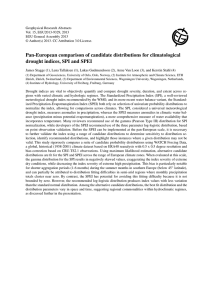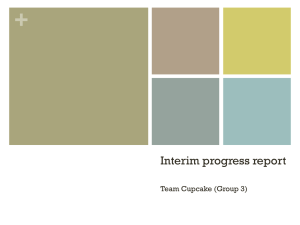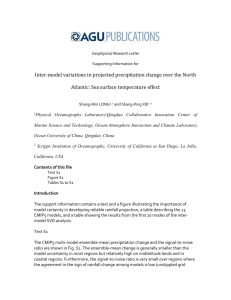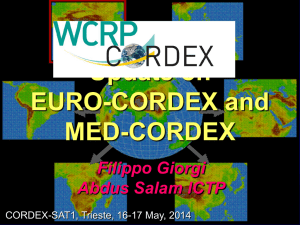wrcr21427-sup-0001-2014WR016318-SupInfo
advertisement
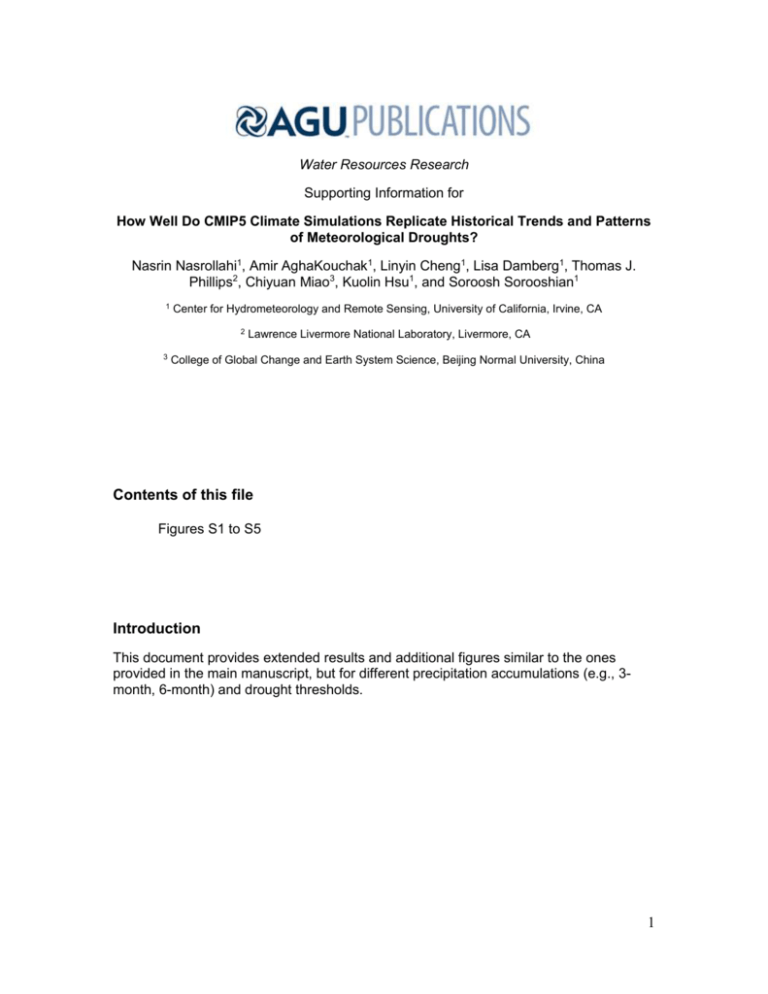
Water Resources Research Supporting Information for How Well Do CMIP5 Climate Simulations Replicate Historical Trends and Patterns of Meteorological Droughts? Nasrin Nasrollahi1, Amir AghaKouchak1, Linyin Cheng1, Lisa Damberg1, Thomas J. Phillips2, Chiyuan Miao3, Kuolin Hsu1, and Soroosh Sorooshian1 1 Center for Hydrometeorology and Remote Sensing, University of California, Irvine, CA 2 3 Lawrence Livermore National Laboratory, Livermore, CA College of Global Change and Earth System Science, Beijing Normal University, China Contents of this file Figures S1 to S5 Introduction This document provides extended results and additional figures similar to the ones provided in the main manuscript, but for different precipitation accumulations (e.g., 3month, 6-month) and drought thresholds. 1 Figure S1. Percentage of land area (%) under drought (3-month SPI <-1) from 19022005 for: (a) total land areas, (b) land areas in the Northern Hemisphere, and (c) land areas in the Southern Hemisphere. Values derived from CRU precipitation observations are shown in black, the values from the ensemble of 41 CMIP5 simulations is shown in gray, and the red line denotes the ensemble mean of these simulations (Similar to Figure 2 in the main manuscript but for 3-month SPI). 2 Figure S2. Percentage of land area (%) under severe drought conditions (3-month SPI <-2) from 1902-2005 for: (a) total land areas, (b) land areas in the NH, and (c) land areas in the SH. Black lines denote the values derived from the CRU observations, gray shading the envelope of the 41 CMIP5 simulations considered, and the red line their ensemble mean (Similar to Figure 3 in the main manuscript but for 3-month SPI). 3 Figure S3. (a) Significant positive (blue) or negative (red) trend in the CRU precipitation observations for the period 1950-2005, based on the 6-month SPI. (b) Percent of model simulations with significant wetting or drying trend in agreement with the CRU data for the same period. 4 Figure S4. (a) Spatial distribution of areas without any significant trend in the CRU data based on 6-month SPI for period 1950-2005 (b) Percent of models in agreement with no significant trend in the observations for the same period. 5 Figure S5. Latitudinal dependence of decadal changes of percentage (%) of land area experiencing moderate drought (3-month SPI < -1). Black lines denote values derived from the CRU precipitation observations, and gray shading the envelope of 41 CMIP5 simulations. 6


